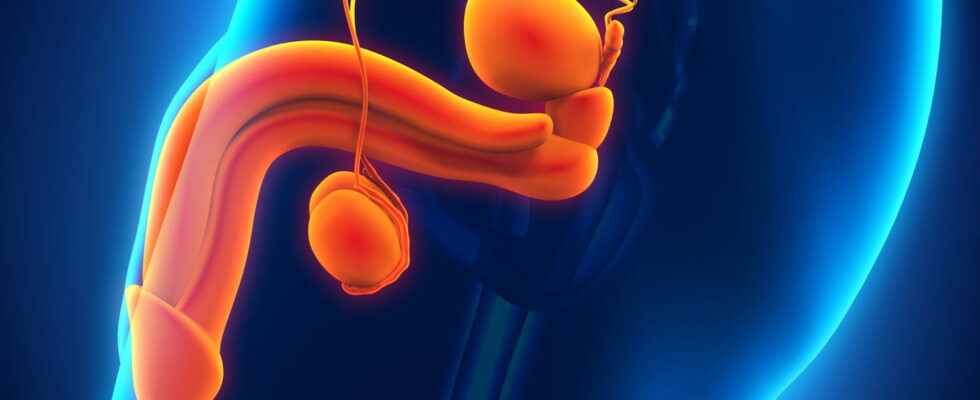Circumcision or posthectomy involves removing all or part of the foreskin that covers the glans penis. This act can be practiced in children and adults for religious reasons, especially among Jews and Muslims, or for medical reasons, in the case of phimosis for example. Explanations and before / after.
Definition: what is circumcision?
The circumcision consists of partial or total removal of the foreskin, the mobile fold of skin that covers and protects the glans penis. It is the most common surgical operation in the world. Circumcision is practiced for three reasons essential, cultural (religious belief), medical (conditions of the foreskin) and prophylactic (prevention). In some Anglo-Saxon countries (e.g. United States), circumcision is encouraged for hygienist and prophylactic reasons, even if this practice tends to decrease.
What are the indications for adult circumcision?
Circumcision or posthectomy maybe practiced in adulthood in case of phimosis, sometimes discovered on the occasion of a paraphimosis. “The absence of treatment exposes to the risk of urinary or sexual difficulties, infection and inflammation of the foreskin, glans and urethral meatus, paraphimosis. The persistence of a uncapped glans exhibits at risk of tumor development glans can be cancerous” recalls the French Association of Urology (AFU).
What is circumcision for phimosis?
Phimosis corresponds to the narrowing of the orifice of the foreskin which hinders or prevents the retraction of the foreskin behind the glans. the stripping then becomes difficult or even impossible. Phimosis is physiological in infants and children up to 4 years old in whom forced stripping must be avoided. It is pathological when it persists, particularly in adulthood, either because of a congenital anomaly (1% of cases) or, most often, due to insufficient capping. Circumcision is necessary when phimosis becomes symptomatic: in case of discomfort, infection or pain.
What is the use of circumcision in case of paraphimosis?
Paraphimosis corresponds to a narrowing of the foreskin which remains stuck behind the crown of the glans. The glans is therefore recapped and recapping is impossible. An edema of the foreskin and glans quickly forms due to discomfort with venous return. Due to the risk of glans necrosis, this condition is a medical emergency. Paraphimosis generally results from a trauma (forced recap or forgetting to recap after sexual intercourse).
When should a child be circumcised?
In children, phimosis is physiological until the age of 4 years because of preputial adhesions that stick the foreskin to the glans. The whitish preputial secretions (smegma), often seen in transparency, go from the bottom to the top of the glans and allow, in 80% of cases, the spontaneous release of adhesions from the age of 5 years. If the phimosis persists beyond that, a circumcision can be proposed.
From what age can a baby be circumcised?
In babies, the foreskin is naturally adherent, the skin of the foreskin is long with a sometimes narrow orifice. This physiological phimosis is not systematically treated or operated. If a circumcision is necessary, it is possible after the age of one year, except complications.
The surgical procedure is performed in ambulatory in children (general or local anesthesia) and adults (local anesthesia). As with any surgery, a preoperative anesthesia consultation is required a few days before the operation. LThe intervention lasts between 15 and 30 minutes and consists of an ablation of the foreskin, which leaves the glans uncovered, more or less completely. Of the absorbable stitches are placed. Most often the frenulum of the foreskin is severed and sutured during the operation.
Does circumcision hurt?
The pain in the operated area is usually minimal and temporary and is relieved by analgesics in the days following the operation. A glans discomfort may persist for several days. The surgeon specifies how long to avoid baths and the date authorized for the resumption of activities.
Pain in the glans is the most common complication.
How long to heal?
Complete healing requires 2 to 4 weeks with local care for a few days. The sutures fall out spontaneously in principle within an average period of 2 to 3 weeks. The resumption of sexual intercourse can be done 15 days after the operation if the healing allows it.
What are the advice to follow after a circumcision?
- Efforts should be avoided for 1 month.
- No baths until healing is complete. Showers are possible.
- You must wait at least 15 days before starting to have sexual intercourse again.
What are the possible complications after a circumcision?
In the majority of cases, the operation takes place without complications. However, any surgical procedure involves a number of risks and complications related to general condition and anesthesia. Pain in the glans is the most common complication. More rarely may appear a hematoma and/or infection in the scarand in the longer term a decrease in the sensitivity of the glans during sexual intercourse. The risk of complications is lower in newborns than in older children. To minimize risk, the procedure should be performed by a trained and experienced practitioner, using sterile technique. Monitoring must be carried out in the days following the operation to ensure the absence of bleeding or fever.
What effects on sexuality?
Circumcision can have an impact on the sensitivity of the glans due to its exposure to air and friction. Therefore, the glans of a circumcised penis is sometimes less sensitive than that of an intact penis with possible worsening over time.
On the health forum: discussions about circumcision
To remember
► Circumcision consists of the partial or total removal of the foreskin, the fold of skin that covers the glans of the penis.
► Circumcision can be performed in adulthood in case of phimosis.
► Circumcision is performed on an outpatient basis in children (general or local anesthesia) and adults (local anesthesia).
► Complete healing requires 2 to 4 weeks.
► No baths until healing is complete.
